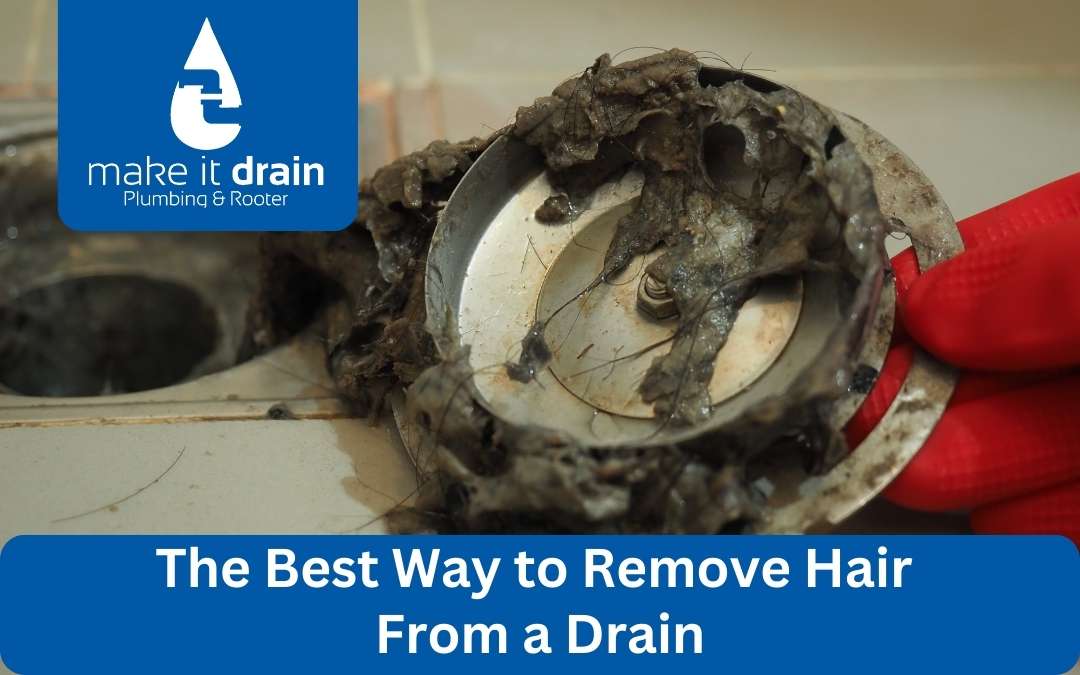1. The Hairy Problem
Hair clogs in drains are a common household nuisance that can lead to slow drainage and, if left unattended, costly plumbing issues. If you’re dealing with a hair-clogged drain, you’re not alone. But fear not, for there are effective ways to tackle this hairy situation. In this blog post, we will explore the best methods to remove hair from a drain and prevent future clogs.
2. Prevention is Key
Before we dive into hair removal methods, let’s discuss prevention. The best way to deal with hair in your drain is to stop it from going down there in the first place. Installing a drain strainer or hair catcher is a simple and cost-effective solution. These handy devices fit over your drain and trap hair before it can enter the pipes. Regularly cleaning and emptying the strainer is a small task that can save you from major clogs in the future.
3. The Trusty Plunger
If you’re already facing a slow-draining sink or shower, a plunger might be your first line of defense. Fill the sink or tub with enough water to cover the drain, then place the plunger over the drain and give it a few vigorous pumps. The pressure should dislodge the hair clog and push it further down the pipe. Be sure to use a plunger specifically designed for sinks and drains, as toilet plungers are not suitable for this task.
4. Chemical Drain Cleaners
Chemical drain cleaners are readily available at most hardware stores and can be effective in dissolving hair clogs. However, they should be used with caution. These chemicals can be harsh on your pipes and harmful to the environment, so always follow the manufacturer’s instructions and consider wearing protective gear when using them. If you have a septic system, be especially cautious, as some chemicals can disrupt the balance of your system.
5. The DIY Approach
If you prefer a more natural and eco-friendly approach, there are several DIY methods to consider. One of the most effective is a mixture of baking soda and vinegar. Start by pouring a pot of boiling water down the drain to soften the clog. Then, add about half a cup of baking soda followed by a cup of vinegar. Cover the drain with a cloth or stopper to contain the fizzing action. After about 15 minutes, flush the drain with hot water. This combination can help break down hair and other debris.
6. Plumbing Tools
For stubborn clogs, you may need to invest in some plumbers tools. A drain snake or auger can be extremely useful in physically removing hair from deep within the pipes. Insert the snake into the drain and turn the handle to break apart and pull out the clog. It may take some effort, but it’s an effective method for serious blockages.
7. Professional Help
If all else fails, or if you’re dealing with a complex plumbing system, it’s time to call in the professionals at Make It Drain Plumbing. Licensed plumbers have the experience and equipment to handle even the toughest clogs. They can use specialized tools like hydro-jetting to clear out your pipes and ensure everything flows smoothly.
8. Maintenance is Key
Once you’ve successfully removed the hair clog from your drain, it’s essential to establish a regular maintenance routine. This includes using a drain strainer or hair catcher, periodically cleaning your pipes with natural solutions, and being mindful of what goes down the drain. By staying proactive, you can avoid future hair-related plumbing headaches.
In Conclusion
Dealing with hair in your drain can be a hassle, but there are effective methods to remove it and prevent future clogs. Whether you opt for prevention, DIY solutions, or a local plumber, the key is taking action promptly to keep your plumbing in tip-top shape. With the right approach, you can bid farewell to hair-related plumbing problems and enjoy a smoothly flowing home.






